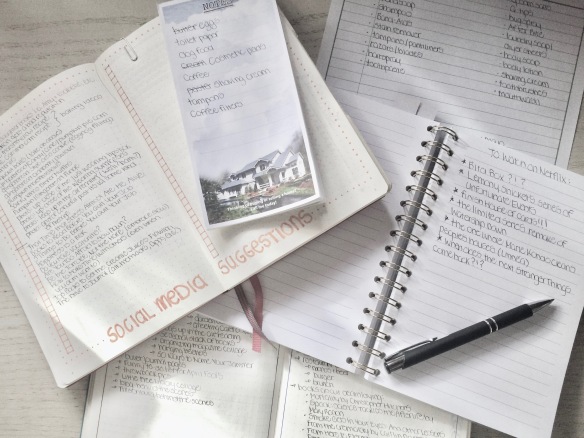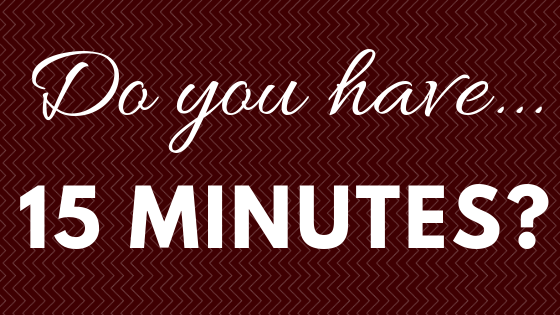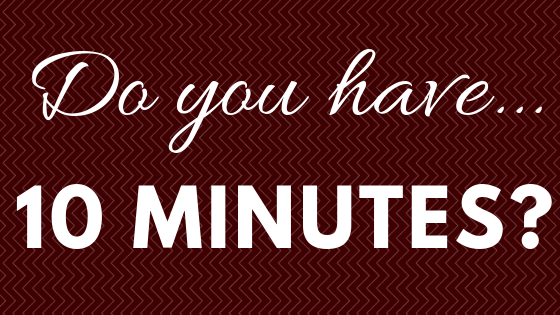 A little while ago I published a blog post on the wisdom of the weekly review. It’s one of my favorite ways to get perspective on all the roles I juggle within my life, but what happens when we’ve lost sight of why we’re doing and what we’re doing? Where exactly are our paths taking us? What does it all mean?! (Hey, I never said this blog wasn’t deep.)
A little while ago I published a blog post on the wisdom of the weekly review. It’s one of my favorite ways to get perspective on all the roles I juggle within my life, but what happens when we’ve lost sight of why we’re doing and what we’re doing? Where exactly are our paths taking us? What does it all mean?! (Hey, I never said this blog wasn’t deep.)
I got the idea for a Yearly Review from Chris Guillebeau (he’s not my friend or anything, I’ve just read a bunch of his stuff) as a way of taking one giant step back and looking at the lessons you’ve learned over the year- what you’ve accomplished, what didn’t work for you. As a workaholic, I love the idea of getting stuff done but it all becomes meaningless when you find yourself working for the sake of working instead of actually working towards something.
At the beginning of last year, I told my story about how bad I am at goal-setting and keeping New Year’s resolutions (for the full confession, click here). It was a brief but interesting experiment in pulling back and examining what I really wanted out of my life. Inspired by Guillebeau, I’ve decided to take it to the next level and force myself to look at all aspects of my life in the same way, not just reading.
Depending on the commitments and goals that you have in your personal and/or professional life, you may want to tailor this process to fit your own particular needs. There are no right or wrong answers, and there aren’t really any rules. What I do suggest is booking some quality time with yourself- grab a latté, listen to some great music and take a little trip down memory line. (It may be handy to have your agenda and a notebook for this process.)
What did you accomplish this year? What deadlines or goals did you meet? Which new habits did you adopt that worked for you? What did you say yes to? What surprised you? Which project makes you feel the most proud? The happiest? What did you enjoy? What got you the most excited?
The ebb and flow of life means we experience positives and negatives, ups and downs. I’m sure you’ve had your fair share of both this year. You’re not alone in this- we all have! But instead of looking at the past year with regret, we can use these less-than-perfect moments to remind ourselves of what we’ve learned and how we’ve grown. Don’t beat yourself up about it. Just be honest.
What was a challenge for you this year? Which habits or behaviors didn’t work for you? Which projects or goals did you walk away from? Which things did you say no to? What would you like to see less of? What more do you wish you were doing?
If you’re a daydreamer like me and keep a someday/maybe list (here’s how to make your own here) you may want to use this time to review and gauge what you’ve accomplished, what you’d like to work on, and which of your priorities have changed.
What would you like to work on? Where would you like to be? What do you wish you had tried? What do you dream about the most?
This is not necessarily about goal-setting (although it can be) or forming a plan of attack for the year ahead (although in some aspects it is). Instead, I’m looking at my Yearly Review as a way to check in with myself- not as a daughter, or a sister, or a blogger- but my own human being self, the one that has wishes and goals are dreams that exist in both my external and internal realities that are all my own. It’s my cue to stop working and start thinking about what I want (and continue to want) from my life. It can be difficult because you’re asking big questions that don’t always have easy answers. Am I happy? Am I satisfied? Am I fulfilled? How do I continue to give to myself and to others?
More than a workflow exercise, the Yearly Review is a great way to figure out who you are right now as a human being, of where you’ve been and where you’re going. Don’t think this is a static exercise either! We’re constantly changing, learning and growing as human beings. You may want to make this a bi-annual practice, or something you do at the end of each month to feel a little more grounded. In any case, I hope that you all have an opportunity to take the time to yourself to figure out what you really want out of life. I give you permission. You deserve it!
 Do you have a similar ritual at the end of the year? What are the things that you’re the most proud of? What do you hope to work on for next year? I want to get to know you better so leave your comments below or drop me a line at keepingbusyb@gmail.com and we can have a chat.
Do you have a similar ritual at the end of the year? What are the things that you’re the most proud of? What do you hope to work on for next year? I want to get to know you better so leave your comments below or drop me a line at keepingbusyb@gmail.com and we can have a chat.
Stay tuned because tomorrow on the blog I’m going to be celebrating the year’s end by highlighting some of my own favorite moments from my 2016 Yearly Review. Hope to see you then!

 What’s your favourite way of dealing with your to-do list? Email me your secrets at keepingbusyb@gmail.com or comment below. Looking for more ways to stay organized and productive? Click here and here.
What’s your favourite way of dealing with your to-do list? Email me your secrets at keepingbusyb@gmail.com or comment below. Looking for more ways to stay organized and productive? Click here and here.
 How long do you hold onto your old agendas for? Do you find this practice useful? Email me at keepingbusyb@gmail.com or comment below and let me know what you do with your old planners. For more organizational and productivity ideas, click
How long do you hold onto your old agendas for? Do you find this practice useful? Email me at keepingbusyb@gmail.com or comment below and let me know what you do with your old planners. For more organizational and productivity ideas, click 
 What are some of the lists that you keep about your likes and dislikes? Where do you store them? Are there any ideas for lists that I didn’t include here? Give me a shout below or let me know at keepingbusyb@gmail.com and I’ll add your list to my list of lists!
What are some of the lists that you keep about your likes and dislikes? Where do you store them? Are there any ideas for lists that I didn’t include here? Give me a shout below or let me know at keepingbusyb@gmail.com and I’ll add your list to my list of lists!



 A little while ago I published a
A little while ago I published a